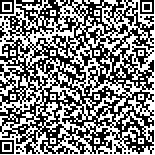下载中心
优秀审稿专家
优秀论文
相关链接
摘要

为了综合分析受随机介质遮蔽目标雷达成像方法效能,本文系统比较了随机介质参数(散射厚度与吸收厚度)、天线布局方式(稀疏阵列的天线阵元间距及空间分布)对合成孔径雷达SAR、时间反转TR以及时间反转—多重信号分类TR-MUSIC这3种典型方法成像效能的影响。结果表明TR-MUSIC表现最优,SAR次之,TR较弱。随着光学厚度或单次散射反照率的增大,3种成像方法效能均发生退化,但TR-MUSIC总体而言相对受影响最弱。散射厚度是造成成像效能退化的主要原因,而吸收厚度的影响较为微弱。根据稀疏阵列下成像方法效能比较结果,利用TR-MUSIC可以抑制栅瓣特性的优势,使用特殊布局的天线可以同时降低雷达系统复杂度和减弱杂波信号,进而改善成像结果。本研究可为提高受随机介质遮蔽目标的雷达成像质量提供理论支撑。
Radar imaging of objects obscured by random media is an important issue because of its wide application in the fields of geography, medicine, and the military. However, the echo signals from the observed target(s) may be severely distorted because of the presence of random media (e.g., vegetation, atmospheric turbulence, biological tissues, or walls), thereby eventually degrading imaging quality. To obtain higher resolution, imaging technology that works in the millimeter wave or even a higher frequency band is desirable. However, the electromagnetic wave in this frequency band is more heavily affected by random media and is more susceptible to attenuation, which hinders the application of millimeter wave radar remote sensing. This limitation further highlights the urgency of research on the imaging of objects obscured by random media. Therefore, evaluating and improving the imaging performance fully and ultimately are especially important.Synthetic Aperture Radar (SAR) technology has been widely used in many fields, especially for remote sensing, since its introduction in the 1950s. Scholars have proposed different imaging algorithms and used the obtained data to analyze the dielectric properties and geometric characteristics of the observed target (e.g., INSAR, POL-SAR, POL-INSAR, and TOMO-SAR). Alternatively, some imaging technology employs the time symmetry of the field (electromagnetic or acoustics) wave equation and the reciprocity of the Green’s function to locate and imaging the targets. In particular, the Time Reversal (TR) method allows us to selectively focus on different targets separately, whereas the Time Reversal-Multiple Signal Classification (TR-MUSIC) method improves the imaging resolution greatly. However, current studies are often limited to a specific field, and research on the comparison of the performance of different methods is relatively rare. Therefore, in this paper, these typical radar imaging methods are selected to evaluate their performance toward imaging the target obscured by random media. Given that the target is obscured by random media, describing the effects caused by random media on the propagation of the electromagnetic wave is necessary. According to the radiation transfer equation, the attenuation of electromagnetic waves caused by random medium is related to optical thickness, which is equal to the sum of the scattering and absorption thickness. The model will be used to describe the interaction of electromagnetic waves with random media. For quantitative evaluation, 3 dB beam-width and the geometric location of a point target response are used.Although the results in the three methods are all degraded by the presence of random media, TR-MUSIC performs the best followed by SAR and TR. The effects of scattering thickness is the main factor that causes imaging degradation, whereas the degradation caused by absorption thickness is very weak. In summary, this phenomenon is due to the clutter enhancement from random media when the scattering thickness increases, while the effects of absorption thickness correspond to the energy of electromagnetic waves being absorbed. Among the three techniques, TR and TR-MUSIC can suppress the grating lobes better than SAR does under a sparse array, and TR-MUSIC delivers the best imaging performance.Considering the advantages of TR-MUSIC in the performance and the side lobe suppression, we focus on improving its performance further. Based on theoretical analysis, some centrally located array elements are removed to undermine clutters, and better imaging results are obtained for TR-MUSIC.

